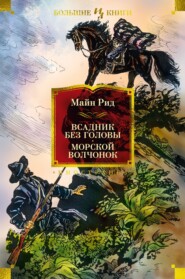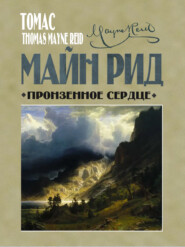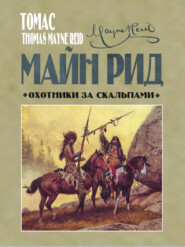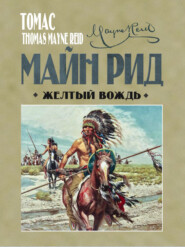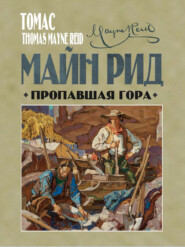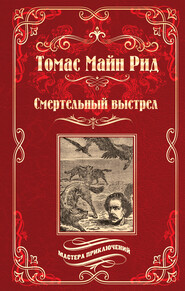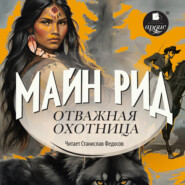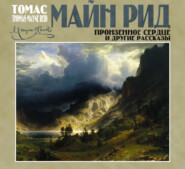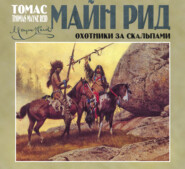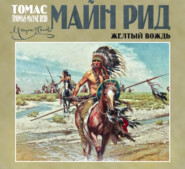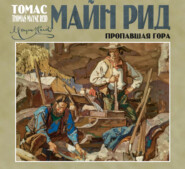По всем вопросам обращайтесь на: info@litportal.ru
(©) 2003-2024.
✖
Odd People: Being a Popular Description of Singular Races of Man
Настройки чтения
Размер шрифта
Высота строк
Поля
It has been stated that this “sipo” is a root of the sarsaparilla itself, with the bark scraped off; and, indeed, its own root would serve well enough – were it not that putting it to such a use would destroy its medicinal value, and thus cause a considerable waste of the costly material. The sarsaparilla is not to be had for nothing even upon the banks of the Tapajos. A bundle of the best quality does not leave the hands of the Mundrucu until about four dollars’ worth of exchange commodities have been put into them, which would bring the price of it to something over sixpence a pound. He is, therefore, a little particular about wasting a material that has cost him – or rather his wife and children – so much trouble in collecting. His cordage is obtained more cheaply, and consists of the long, flexible roots of a species of pothos, which roots – being what are termed aerial and not buried in the ground – require no labour or digging to get at them. It is only necessary to stretch up the hand, and pull them down from the tops of lofty trees, from which they hang like streamers, often to the length of a hundred feet. These are toughened by the bark being scraped off; and when that is done they are ready for use, and serve not only to tie up the bundles of sarsaparilla, but for many other purposes in the domestic economy of the Mundrucus.
In addition to the sarsaparilla, the Mundrucu furnishes the trader with several other items of commercial value – for his climate, although one of the most unhealthy in all the Amazon region, on account of its great heat and humidity, is for that very reason one of the most fertile. Nearly all those tropical vegetable products which are characteristics of Brazilian export commerce can here be produced of the most luxuriant kind; but it is only those that grow spontaneously at his very doors that tempt the Mundrucu to take the trouble of collecting them.
There is one article however, which he not only takes some trouble to collect, but also to manufacture into an item of commercial exchange – a very rare item indeed. This is the guarana, which is manufactured from the fruit of a tree almost peculiar to the Mundrucu territory – since nowhere is it found so abundantly as on the Tapajos. It is so prized in the Brazilian settlements as to command almost its weight in silver when transported thither. It is the constituent element of a drink, which has a stimulating effect on the system, somewhat more powerful than tea or coffee. It will prevent sleep; but its most valuable property is, that it is a good febrifuge, equal to the best quinine. Guarana is prepared from the seeds of an inga – one of the Mimosacae. It is a low, wide-spreading tree like most of the mimosa family. The legumes are gathered, and the seeds roasted in them. The latter are then taken out, and after being ground to powder, are mixed with water so as to make a tough paste, which is moulded into little bricks, and when dried is ready for use. The beverage is then prepared by scraping a table-spoonful of dust from the brick, and mixing it with about a pint of water; and the dry paste, keeping for any length of time, is ready whenever wanted.
The guarana bush grows elsewhere in the Amazon valley, and on some headwaters of the Orinoco, where certain tribes also know how to prepare the drink. But it is sparingly distributed, and is nowhere so common as on the upper Tapajos hence its high price in the markets of Brazil. The Mundrucu manufactures it, not only for “home use,” but for “exportation.”
He prepares another singular article of luxury, and this he makes exclusively for his own use, – not for the gratification of his lips or palate, but for his nose, – in other words, a snuff. Do not fancy, however, that it is snuff of the ordinary kind – the pulverised produce of innocent tobacco. No such thing; but a composition of such a powerful and stimulating character, that he who inhales it feels as if struck by an electric shock; his body trembles; his eyes start forward as if they would forsake their sockets; his limbs fail to support him; and he drops to the earth like one in a state of intoxication! For a short time he is literally mad; but the fit is soon over, – lasting usually only a few minutes, – and then a feeling of renewed strength, courage, and joyousness succeeds. Such are the consequences of taking snuff with a Mundrucu.
And now to describe the nature of the substance which produces these powerful effects.
Like the guarana this snuff is a preparation, having for its basis the seeds of a leguminous tree. This time, however, it is an acacia, not an inga. It is the acacia niopo; so called because “niopo” is the name given to the snuff itself by certain tribes (the Ottomacs and others), who, like the Mundrucus, are snuff-takers. It is also called curupa, and the apparatus for preparing and taking it – for there is an apparatus of an extensive kind – is termed parica, in the general language (lingoa geral) of the Amazonian regions.
We shall describe the preparation, the apparatus, and the ceremonial.
The pods of the Acacia niopo– a small tree, with very delicate pinnate leaves – are plucked when ripe. They are then cut into small pieces and flung into a vessel of water. In this they remain until macerated, and until the seeds have turned black. These are then picked out, pounded in a mortar, which is usually the pericarp of the sapuçaia, or “monkey-pot” tree (Lecythys ollaria). The pounding reduces them to a paste, which is taken up, clapped between the hands and formed into little cakes – but not until it has been mixed with some manioc flour, some lime from a burnt shell (a helix), and a little juice from the fresh leaves of the “abuta” – a menispermous plant of the genus Cocculus. The cakes are then dried or “barbecued” upon a primitive gridiron – the bars of which are saplings of hard wood – and when well-hardened the snuff is ready for the “box.” In a box it is actually carried – usually one made out of some rare and beautiful shell.
The ceremonial of taking the snuff is the most singular part of the performance. When a Mundrucu feels inclined for a “pinch” – though it is something more than a pinch that he inhales when he does feel inclined – he takes the cake out of the box, scrapes off about a spoonful of it into a shallow, saucer-shaped vessel of the calabash kind, and then spreads the powder all over the bottom of the vessel in a regular “stratification.” The spreading is not performed by the fingers, but with a tiny, pencil-like brush made out of the bristles of the great ant-eater (Myrmecophaga jubata).
He is in no hurry, but takes his time, – for as you may guess from its effects, the performance is not one so often repeated as that of ordinary snuff-taking. When the niopo dust is laid to his liking, another implement is brought into play, the construction of which it is also necessary to describe. It is a “machine” of six to eight inches in length, and is made of two quills from the wing of the gaviao real, or “harpy eagle” (Harpyia destructor). These quills are placed side by side for the greater part of their length, forming two parallel tubes, and they are thus neatly whipped together by a thread. At one end they are pressed apart so as to diverge to a width corresponding to the breadth between the Mundrucu’s nostrils, – where it is intended they shall be placed during the ceremony of snuff-taking.
And thus are they placed, – one end of each quill being slightly intruded within the line of the septum, while the other end rests upon the snuff, or wanders over the surface of the saucer, till all the powder placed there is drawn up and inhaled, producing the convulsive effects already detailed.
The shank-bone of a species of bird – thought to be a plover – is sometimes used instead of the quills. It is hollow, and has a forking-tube at the end. This kind is not common or easily obtained, for the niopo-taker who has one, esteems it as the most valuable item of his apparatus.
Snuffing the niopo is not exclusively confined to the Mundrucu. We have seen elsewhere that it is also a habit of the dirt-eating Ottomacs; and other tribes on the upper Amazon practise it. But the Mahües, already mentioned as the allies of the Mundrucus, are the most confirmed snuff-takers of all.
Another odd custom of the Mundrucus is their habit of “tatooing.” I speak of real tatooing, – that is, marking the skin with dots and lines that cannot be effaced, in contradistinction to mere painting, or staining, which can easily be washed off. The Mundrucus paint also, with the anotto, kuitoc, caruta, and other pigments, but in this they only follow the practice of hundreds of other tribes. The true tatoo is a far different affair, and scarcely known among the aborigines of America, though common enough in the islands of the South Sea. A few other Indian tribes practise it to a limited extent, – as is elsewhere stated, – but among the Mundrucus it is an “institution;” and painful though the process be, it has to be endured by every one in the nation, “every mother’s son,” and daughter as well, that are cursed with a Mundrucu for their father.
It is upon the young people the infliction is performed, – when they are about eight or ten years of age.
The tatoo has been so often described, that I should not repeat it here; but there are a few “points” peculiar to Mundrucu tatooing, and a few others, not elsewhere understood.
The performance is usually the work of certain old crones, who, from long practice, have acquired great skill in the art.
The chief instrument used is a comb of thorns, – not a single thorn, as is generally stated, – but a tier or row of them set comb-fashion. These thorns are the spines of the “murumuru,” or “pupunha” palm (Gullielmia speciosa). Humboldt states that this palm is smooth and spineless, but in this the great, good man was in error. Its trunk is so covered with thorns or spines, that when the Indians require to climb it – for the purpose of procuring the valuable fruits, which they eat variously prepared – they have to erect a staging, or rude sort of ladder, to be able to get at them.
The comb, then, is pressed down upon the skin of the “tatooee,” till all the points have penetrated the flesh, and a row of holes is laid open, from which the blood flows profusely. As soon as this can be wiped off, ashes of a burnt gum or pitch are rubbed into the wounds, which, when healed, appear like so many dots of a deep bluish or black colour. In this way the young Mundrucus, both boys and girls, get those regular rows of dotted lines, which traverse their forehead and cheeks, their arms and limbs, breasts, and bodies in such eccentric fashion. It has often been asked how these lines of dots were carried over the skin in such straight and symmetrical rows, forming regular parallel lines, or other geometrical patterns. The “comb” will explain the mystery.
The tatoo, with a few strings of shell-beads or necklaces, and bracelets of monkey and jaguar teeth, is all the dress which is permitted to the Mundrucu belle. In Mundrucu-land it is the reverse of what is practised among civilised people: the men are the exponents of the fashions, and keep exclusively to themselves the cosmetics and bijouterie. Not contented with being tatooed, these also paint their bodies, by way of “overcoat,” and also adorn themselves with the bright feathers of birds. They wear on their heads the beautiful circlet of macaw-plumes, and on grand occasions appear in the magnificent “feather dress,” so long celebrated as the peculiar costume of the tropical-forest Indian. These dresses their women weave and border, at a sacrifice of much tedious labour. They also ornament their arms and legs with rows of feathers around them, the tips turned upward and backward.
The tatooing is confined to the Mundrucus proper, – their allies, the Mahües not following the practice, but contenting themselves with a simple “coat” of paint.
It is difficult to say what motive first inducted human beings into this singular and barbarous custom. It is easier to tell why it is still followed, and the “why” is answered by saying that the Mundrucus “scarify” themselves, because their fathers did so before them. Many a custom among civilised nations, but little less ridiculous, if we could only think so, rests upon a similar basis. Perhaps our modern abominable hat – though it has a different origin – is not less ludicrous than the tatooed patterns of the savage. Certainly it is quite equal to it in ugliness, and is likely to rival it in permanence, – to our sorrow be it said. But even we deal slightly in the tatoo. Our jolly Jack would be nobody in the forecastle without “Polly,” in blue, upon his weather-beaten breast, and the foul anchor upon his arm.
But the Mundrucu baptises his unfortunate offspring in a still more savage fashion. The tattoo may be termed the baptism in blood, performed at the tender age of ten. When the youth – fortunately it does not extend to the weaker sex – has attained to the age of eighteen, he has then to undergo the tocandeira, which deserves to be called the baptism of fire!
This too merits description. When the Mundrucu youth would become a candidate for manhood, a pair of “gloves” is prepared for him. These consist of two pieces of a palm-tree bark, with the pith hollowed out, but left in at one end. The hollow part is of sufficient diameter to draw over the hands loosely, and so long as to reach up to mid-arm, after the fashion of gauntlets.
The “gloves” being got ready, are nearly filled with ants, not only the venomous red ants, but all other species, large or small, that can either bite or sting, of which tropical South America possesses an endless variety. With this “lining” the “mittens” are ready for use, and the “novice” is compelled to draw them on. Should he refuse, or even exhibit a disposition to shrink from the fiery trial, he is a lost man. From that hour he need never hold up his head, much less offer his hand and heart, for there is not a maiden in all Mundrucu-land that would listen to his softest speech. He is forever debarred from the pleasure of becoming a benedict. Of course he does not refuse, but plunging his hands into the “mittens,” into the very midst of the crawling host, he sets about the ceremony.
He must keep on the gloves till he has danced before every door in the village. He must sing as if from very joy; and there is plenty of music to accompany him, drums and fifes, and human voices, – for his parents and relatives are by his side encouraging him with their songs and gestures. He is in pain, – in positive agony, – for these venomous ants both sting and bite, and have been busy at both from the very first moment. Each moment his agony grows more intense, his sufferings more acute, for the poison is thrilling through his veins, – he turns pale, – his eyes become blood-cast, – his breast quivers with emotion and his limbs tremble beneath him; but despite all this, woe to him if he utter a cry of weakness! It would brand him with an eternal stigma, – he would never be suffered to carry the Mundrucu lance to battle, – to poise upon its point the ghastly trophy of the Beheaders. On, on, through the howling throng, amidst friends and relatives with faces anxious as his own; on to the sound of the shrill-piping reed and the hoarse booming of the Indian drum; on till he stands in front of the cabin of the chief! There again the song is sung, the “jig” is danced, both proudly prolonged till the strength of the performer becomes completely exhausted. Then, and not till then, the gloves are thrown aside, and the wearer falls back, into the arms of his friends, “sufficiently punished!”
This is the hour of congratulation. Girls gather round him, and fling their tatooed arms about his neck. They cluster and cling upon him, singing his song of triumph; but just at that crisis he is not in the mood for soft caresses; and, escaping from their blandishments, he makes a rush towards the river. On reaching its bank he plunges bodily in, and there remains up to his neck in the water, till the cooling fluid has to some extent eased his aching arms, and tranquillised the current of his boiling blood. When he emerges from the water, he is a man, fit stuff for a Mundrucu warrior, and eligible to the hand of a Mundrucu maiden.
It may be remarked that this terrible ordeal of the Mundrucus, though, perhaps, peculiar among South-American Indians, has its parallel among certain tribes of the north, – the Mandans and others, as detailed by Catlin, one of the most acute of ethnological observers.
The scalp trophy, too, of the Northern Indian has its analogy in a Mundrucu custom – that which distinguishes him most of all, and which has won for him the terrible title of “Beheader.”
This singular appellation is now to be explained.
When a Mundrucu has succeeded in killing an enemy, he is not, like his northern compeer, satisfied with only the skin of the head. He must have the whole head, scalp and skull, bones, brains, and all! And he takes all, severing the head with his knife by a clean cut across the small of the neck, and leaving the trunk to the vulture king. With the ghastly trophy poised upon the point of his lance, he returns triumphant to the malocca to receive the greetings of his tribe and the praises of his chief.
But the warlike exploit requires a memento – some token by which he may perpetuate its fame. The art of printing does not exist among the Mundrucus, and there is no friendly pen to record the deed. It has been done, – behold the evidence! much clearer than often accompanies the exploits of civilised heroes. There is the evidence of an enemy slain; there is the grim, gory voucher, palpable both to sight and touch – proof positive that there is a dead body somewhere.
Of course, such evidence is sufficient for the present; but how about the future? As time passes, the feat may be forgotten, as great deeds are elsewhere. Somebody may even deny it. Some slanderous tongue may whisper, or insinuate, or openly declare that it was no exploit after all – that there was no dead man; for the vultures by this time would have removed the body, and the white ants (termites) would have equally extinguished all traces of the bones. How, then, are the proofs to be preserved? By preserving the head! And this is the very idea that is in the mind of the Mundrucu warrior. He is resolved not to permit his exploit to be buried in oblivion by burying the head of his enemy. That tongue, though mute, will tell the tale to posterity; that pallid cheek, though, perhaps, it may become a little shrivelled in the “drying,” will still be smooth enough to show that there is no tatoo, and to be identified as the skin of an enemy. Some young Mundrucu, yet unborn, will read in the countenance of that grinning and gory witness, the testimony of his father’s prowess. The head, therefore, must be preserved; and it is preserved with as much care as the cherished portrait of a famous ancestor. The cranial relic is even embalmed, as if out of affection for him to whom it belonged. The brains and eye-balls are removed, to facilitate the process of desiccation; but false eyes are inserted, and the tongue, teeth, and ears, scalp, skull, and hair, are all retained, not only retained, but “titivated” out in the most approved style of fashion. The long hair is carefully combed out, parted, and arranged; brilliant feathers of rock-cock and macaw are planted behind the ears and twisted in the hanging tresses. An ornamental string passes through the tongue, and by this the trophy is suspended from the beams of the great malocca.
It is not permitted to remain there. In some dark niche of this Golgotha – this Mundruquin Westminster – it might be overlooked and forgotten. To prevent this it is often brought forth, and receives many an airing. On all warlike and festive occasions does it appear, poised upon the point of the warrior’s lance; and even in peaceful times it may be seen – along with hundreds of its like – placed in the circular row around the manioc clearing, and lending its demure countenance to the labours of the field.
It is not a little singular that this custom of embalming the heads of their enemies is found among the Dyaks of Borneo, and the process in both places is ludicrously similar. Another rare coincidence occurs between the Amazonian tribes and the Bornean savages, viz in both being provided with the blow-gun. The gravitana of the American tribes is almost identical with the sumpitan of Borneo. It furnishes a further proof of our theory regarding an original connection between the American Indians and the savages of the great South Sea.
The Mundrucu is rarely ill off in the way of food. When he is so, it is altogether his own fault, and chargeable to his indolent disposition. The soil of his territory is of the most fertile kind, and produces many kinds of edible fruits spontaneously, as the nuts of the pupunha palm and the splendid fruits of the Bertholetia excelsa, or juvia-tree, known in Europe as “Brazil-nuts.” Of these then are two kinds, as mentioned elsewhere, the second being a tree of the genus Lecythys, – the Lecythys ollaria, or “monkey-pot” tree. It obtains this trivial name from the circumstance, first, of its great pericarp, almost as large as a child’s head, having a movable top or lid, which falls off when the fruit ripens; and secondly, from the monkeys being often seen drawing the seeds or nuts out of that part of the shell which remains attached to the tree, and which, bearing a considerable resemblance to a pot in its shape, is thus very appropriately designated the pot of the monkeys. The common Indian name of the monkey-pot tree is sapuçaia, and the nuts of this species are so called in commerce, though they are also termed Brazil-nuts. They are of a more agreeable flavour than the true Brazil-nuts, and not so easily obtained, as the Lecythys is less generally distributed over the Amazonian valley. It requires a peculiar soil, and grows only in those tracts that are subject to the annual inundations of the rivers.
The true Brazil-nuts are the “juvia” trees of the Indians; and the season for collecting them is one of the harvests of the Mundrucu people. The great pericarps – resembling large cocoa-nuts when stripped of the fibres – do not open and shed their seeds, as is the case with the monkey-pot tree. The whole fruit falls at once; and as it is very heavy, and the branches on which it grows are often nearly a hundred feet from the ground, it may easily be imagined that it comes down like a ten-pound shot; in fact, one of them falling upon the head of a Mundrucu would be very likely to crush his cranium, as a bullet would an egg-shell; and such accidents not unfrequently occur to persons passing imprudently under the branches of the Bertholetia when its nuts are ripe. Sometimes the monkeys, when on the ground looking after those that have fallen, become victims to the like accident; but these creatures are cunning reasoners, and being by experience aware of the danger, will scarce ever go under a juvia-tree, but when passing one always make a wide circuit around it. The monkeys cannot of themselves open the great pericarp, as they do that of the “sapuçaia,” but are crafty enough to get at the precious contents, notwithstanding. In doing this they avail themselves of the help of other creatures, that have also a motive in opening the juvia shells – cavies and other small rodent animals, whose teeth, formed for this very purpose, enable them to gnaw a hole in the ligneous pericarps, hard and thick as they are. Meanwhile the monkeys, squatted around, watch the operation in a careless, nonchalant sort of way, as if they had no concern whatever in the result; but as soon as they perceive that an entrance has been effected, big enough to admit their hand, they rush forward, drive off the weaker creature, who has been so long and laboriously at work, and take possession of the prize.
Neither does the Mundrucu nut-gatherer get possession of the juvia fruit without a certain degree of danger and toil. He has to climb the tallest trees, to secure the whole crop at one time; and while engaged in collecting those upon the ground, he is in danger of a blow from odd ones that are constantly falling. To secure his skull against accidents, he wears upon his head a thick wooden cap or helmet, – after the fashion of the hats worn by our firemen, – and he is always careful to keep his body in an upright attitude, stooping as seldom as he can avoid doing so, lest he might get a thump between the shoulders, or upon the spine of his back, which would be very likely to flatten him out upon the earth. These Brazil-nuts furnish the Mundrucu with a portion of his food, – as they also do many other tribes of Amazonian Indians, – and they are also an item of Indian commerce, being collected from among the different tribes by the Portuguese and Spanish traders.
But the Mundrucu does not depend altogether on the spontaneous productions of the forest, which at best furnish only a precarious supply. He does something in the agricultural line, – cultivating a little manioc root, with, plantains, yams, and other tropical plants that produce an enormous yield with the very slightest trouble or attention; and this is exactly what suits him. A few days spent by the little community in the yam patch – or rather, by the women and children, for these are the agricultural labourers in Mundrucu-land – is sufficient to ensure an abundant supply of bread-stuff for the whole year. With regard to flesh-meat he is not so well off, for the domestic animals, and oxen more especially, do not thrive in the Amazon country. In Mundrucu-land, the carnivorous jaguar, aided by flies and vampire bats, would soon destroy them, even if the Indian had the inclination to raise them, which he has not.
Instead of beef, therefore, he contents himself with fish, and occasionally a steak from the great tapir, or a griskin of manati. Birds, too, furnish him with an occasional meal; but the staple article of his flesh diet is obtained from the quadrumana, – the numerous species of monkeys with which his forests abound. These he obtains by shooting them down from the trees with his bow and arrows, and also by various other hunting devices.
His mode of cooking them is sufficiently peculiar to be described. A large log fire is first kindled and permitted to burn until a sufficient quantity of red cinders are produced. Over these cinders a grating is erected with green saplings of wood, laid parallel to each other like the bars of a gridiron, and upon this the “joint” is laid.
Nothing is done to the monkey before its being placed on the gridiron. Its skin is not removed, and even the intestines are not always taken out. The fire will singe off the hair sufficiently to content a Mundrucu stomach, and the hide is broiled and eaten, with the flesh. It is thus literally “carne con cuero.”
It may be observed that this forest gridiron, or “barbecue,” as it is properly termed, is not an idea exclusively confined to South America. It is in use among the Indians of the north, and various uncivilised tribes in other parts of the world.
Sometimes the Mundrucu does not take the trouble to construct the gridiron. When on the march in some warlike expedition that will not allow time for being particular about the mode of cooking, the joint is broiled upon a spit over the common fire. The spit is simply a stick, sharpened at both ends, one of which impales the monkey, and the other is stuck into the ground. The stick is then set with a lean towards the fire, so as to bring the carcass over the blaze. While on the spit the monkey appears in a sitting position, with its head upward, and its long tail hanging along the sapling, – just as if it were still living, and in one of its most natural attitudes, clinging to the branch of a tree! The sight is sufficiently comical; but sometimes a painful spectacle has been witnessed, – painful to any one but a savage: when the young of the monkey has been captured along with its dam, and still recognising the form of its parent, – even when all the hair has been singed off, and the skin has become calcined by the fire, – is seen rushing forward into the very flames, and with plaintive cry inviting the maternal embrace! Such an affecting incident has been often witnessed amid the forests of Amazopia.
We conclude our sketch of the Mundrucus, by stating that their form of government is despotic, though not to an extreme degree. The “tushao,” or chief, has considerable power, though it is not absolute, and does not extend to the taking of life, – unless the object of displeasure be a slave, and many of these are held in abject bondage among the Mundrucus.
The Mundrucu religion resembles that of many other tribes both in North and South America. It consists in absurd ceremonies, and appeals to the good and evil spirits of the other world, and is mixed up with a vast deal of quackery in relation to the ills that afflict the Mundrucu in this life. In other words, it is a combination of the priest and doctor united in one, that arch-charlatan known to the North-American Indians as the “Medicine-man,” and among the Mundrucus as the “Puge.”
Chapter Six.
The Centaurs of the “Gran Chaco.”
I have elsewhere stated that a broad band of independent Indian territory – that is, territory never really subdued or possessed by the Spaniards – traverses the interior of South America, extending longitudinally throughout the whole continent. Beginning at Cape Horn, it ends in the peninsula of the free Goajiros, which projects into the Caribbean Sea, – in other words, it is nearly 5,000 miles in length. In breadth it varies much. In Patagonia and a portion of the Pampas country it extends from the Atlantic to the Pacific, and it is of still wider extent on the latitude of the Amazon river, where the whole country, from the Atlantic to the Peruvian Andes, – with the exception of some thinly-placed Brazilian settlements, – is occupied by tribes of independent Indians. At either point this territory will appear – upon maps – to be interrupted by tracts of country possessing civilised settlements. The names of towns and villages are set as thickly as if the country were well peopled; and numerous roads are traced, forming a labyrinthine network upon the paper. A broad belt of this kind extends from the Lower Parana (La Plate) to the Andes of Chili, constituting the upper provinces of the “Argentine Confederation;” another apparently joins the settlements of Bolivia and Brazil; and again in the north, the provinces of Venezuela appear to be united to those of New Granada.






